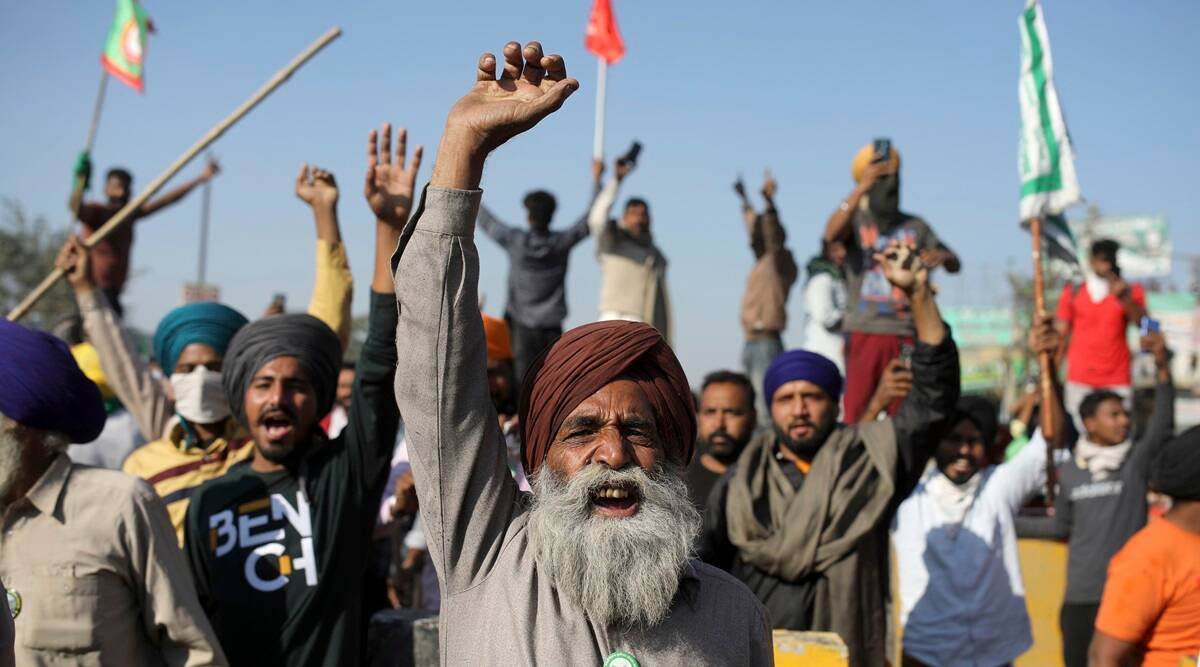 November 28 onwards, farmers from Punjab have led the way to the fringes of Delhi, in tractors and trollies.
November 28 onwards, farmers from Punjab have led the way to the fringes of Delhi, in tractors and trollies. We are now in the month of Poh, the pinnacle of winter, according to the solar Nanakshahi calendar, named after the first Guru, Nanak. This 10th month starts around December 14 each year, lasting 30 days. Eventually, seasons do turn, light emerges again.
Poh, a period of struggle, finds reward, surviving cold days ending with longer icy nights. Even shahadatein, or martyrdom for a cause one has committed oneself to, is acceptable. Soon, it will be Gurpurab or the birth anniversary of Dasam Padshah, the tenth Guru, Gobind Singh ji. Nature will regenerate.
It too was the month of Poh, over 300 years ago, in Machhiwara that saw Guru Gobind Singh retreat to the forests on losing his soldiers, included his own two older sons, both teenagers. It was 8th Poh, or approximately December 21 when his two Sahibzades, Ajit Singh and Jujhar Singh were martyred in battle. His Pashtoon devotees disguised him as their pir, accompanying him to safety.
At Machhiwara he, saint-soldier, expressed his anguish to his Creator: Mitr Piyarey Nu, Haal Mureedaan Da Kehna… (“Your disciples share our plight: Without you, warm blankets feel disease-infected; Comfort of home is living among snakes. Bed of stone in your presence, Is consoling as life in palaces”).
Guru Gobind Singh’s petition to his beloved friend, perhaps resonates more deeply with farmers from Punjab today, generating inspiration. Both willingly left the comforts of home for a life of uncertainty, amid hostility.
This too is the month of Poh. November 28 onwards, farmers from Punjab have led the way to the fringes of Delhi, in tractors and trollies. Crossing barricades, they come together in what is now acknowledged as an impending agricultural crisis. Townships of trollies and tents have sprung up, possibly breaking records in instantaneous human settlements.
The intense cold, as constant a companion to Poh, as rabab player Mardana was to Nanak, remains unabated. This cruelest of Decembers in 150 years was followed by unprecedented January temperatures. Residents housed in their kilometres-long tractor trollies and tent cities, parked along the highways of Delhi remain firm.
Day 47 of the protests, when homes in Punjab were willingly exchanged for life on highways, has already mourned several lost lives. Life-force is being sapped from veins and arteries, much like the forests and trees Guru Nanak described in his introduction to Poh, in Guru Granth Sahib: Pokhi tukharu parai vanu trinu rasu sokhai (“During severe cold, Poh saps the rasa from woods and grass”).
Geographically, historically or philosophically, what is it about the Punjab farming community that makes them vanguards in the safekeeping of farms and homes? “How will we face our children when they ask us where we were while our lands were being snatched away? It is we the kisans who give birth to jawans.”
Yet the label of convenience used is Khalistani, aimed at disempowering and demeaning a community. Rather, this affront has fuelled energy, including among sections of the Forces, adding gravitas and the moral force of zameer or conscience to the existing might in the protection of their zameen.
“Why does no none question the financing of langars functioning and flourishing worldwide for over five centuries?” is an NRI’s query. At Burari she bows towards the highway dividers where her people have just sown onions seeds. The yield will be shared at some of the over-100 community kitchens that have organically proliferated. “The cooks and sewadars carry buckets full of dal and kheer, not ammunitions”, another farmer reminds us.
Langars have become as diverse as the meals served and the needs determined each new day: Diesel langars along highways; tent and tarpaulin langars, some from United Sikhs; Kisan malls for all daily needs from Khalsa Aid; night shelter bus langars from Delhi Gurudwara Management Committee; laundry langars serviced by a kabaddi team; medical langar including a cardiologist from New Jersey; a multilingual newspaper Trolley Times, published by activists and filmmakers…all sewadars, uniting farmers, traders and landless at these shrines of purpose and peace.
Be it territorial protection displayed over centuries or what farmers today refer to simply as kaaley kanoon, the Poh showers rain and fog haven’t dampened determination. Sardar Dilbagh Singh cycled from Tarn Tarn to contribute Rs 100 to the langar. Sixty-two year old Manjeet Kaur drove a jeep-load of women from Patiala.
As multinational pharma companies race to produce the most effective medical vaccine, an assured elderly proclaims “we the farmers are the vaccine for the pandemic of land-grabbing.”
Under the midnight sky of Poh, this public declaration of a collectively created antidote finds echoes. Is their struggle now elevated from a Punjab farmers’ protest to a national agrarian movement? In this ongoing land lockdown, do Punjab farmers retain the trophy of sacrifice and victory, since the 1905 movement Pagri Sambhal Jatta (“Farmers, Protect your Turbans”)? Yet again they stand in the first line of defence, vanguards holding together about 40 farmer groups from diverse corners of the country. No, they won’t be divided.
The virus of Josh or “Chardi Kala” is contagious. Lyricist-singers Kanwar Grewal and Harf Cheema respond to the Beloved Friend, addressed in the tenor of their Guru. They serenade Delhi’s highways and dividers, along with its dwellers, who too have willingly rendered themselves homeless: Barsey koi Noor Illahey Dilli dey barder tey….Sadey liye kiley ban gayian Sadkaan, Padshah (“May it rain blessings of Allah On the borders of Dilli…For us, the streets have transformed Into fortresses, my Badshah”).
Dewan is a filmmaker. Verse translation by Bhai Kultar Singh